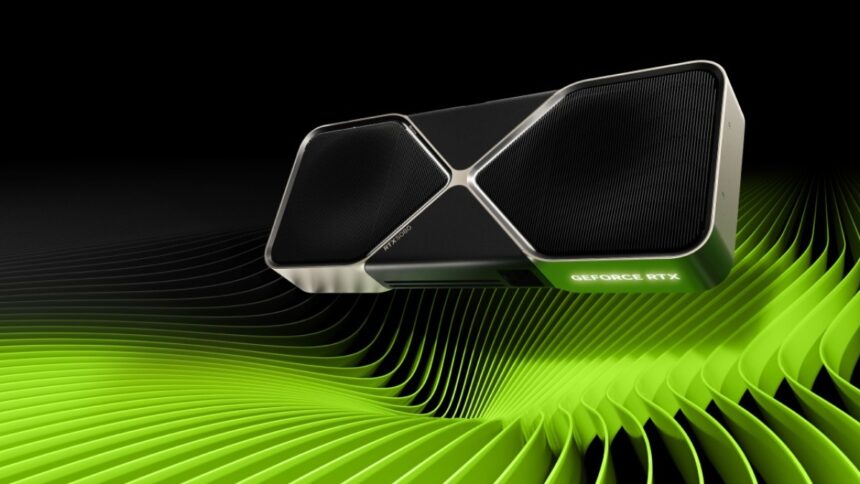Nvidia’s RTX 5080 and 5090 GPUs: Strategies for Securing Yours
As soon as Nvidia introduced its latest RTX 5080 and 5090 gaming GPUs at the end of January, excitement led to a quick sell-out—a scenario familiar to those who have attempted to purchase these popular graphics cards before.
According to Newegg, the stock was depleted “within minutes.” Major retailers currently lack inventory, causing frustration among consumers and reviewers alike. Many are accusing Nvidia of conducting a “paper launch,” a term used when a company claims to release a product while providing insufficient stock to satisfy demand.
Starting at a price point of $999 for the 5080, these graphics cards cater to a premium segment. However, securing one now might entail reseller purchases, which could inflate your expenditure by as much as double, further benefitting the scalpers who exacerbate stock shortages.
Fortunately, there are varied strategies to acquire a new Nvidia graphics card through legitimate channels, albeit requiring some persistence. With determination, it is possible to be among the first in line when restocks occur.
Obtain “Verified Priority Access”
On February 19, Nvidia reintroduced a program designed to assist gamers in obtaining the RTX 4090, adapted now for the 50 series. Dubbed “verified priority access,” this initiative allows you to queue for a chance to purchase the latest GPUs.
The process involves completing a specific form on Nvidia’s website. The eligibility criteria include owning an Nvidia account established before January 30 at 6 AM PST, while the system will inquire about your GPU preference—either the RTX 5080 or RTX 5090—and analyze your usage of Nvidia’s services. Though their algorithm’s exact workings remain undisclosed, it aims to distinguish genuine customers from potential scalpers.
If deemed a legitimate user, Nvidia will verify your account and add you to a limited pool of selected consumers who may receive purchasing invitations via email. This offer is currently limited to the U.S. only, but completing the form is free and could represent a valuable chance to secure a card.
Nvidia expects to begin sending out purchase invitations through this program shortly. While verification does not assure a sale, it does increase your chances of acquiring a GPU.
Enroll for Stock Notifications

Although it might seem monotonous, prominent retailers like Newegg, Best Buy, Amazon, and B&H offer opportunities to sign up for notifications regarding stock availability. This feature is usually positioned beside or below a disabled “buy” button on product pages. Often integrated with a wishlist function, this mechanism aids in monitoring all desired items—especially useful for specific PC builds.
Consider Your Nearest Microcenter
Microcenter distinguishes itself as a favored electronics retailer, primarily offering its products for in-store purchases. Presently, their inventory mirrors that of other retailers, showing as sold out. However, a visible banner on their website indicates they are diligently working to restock products soon.
Shopping locally at Microcenter can significantly lessen your competition: Rather than contending with shoppers nationwide, you’ll only compete with your local community. Product availability can be verified online before making a trip to the physical store; simply input your location on the product page to ascertain if stock is present. Some items allow for a reservation to be made for in-store pickup, although for newly released GPUs, Microcenter likely operates on a “first-come, first-served” basis.
Stay Updated via Social Media
While receiving notifications about product availability is helpful, aiming to click the “buy” button even before a GPU is restocked is ideal. This is where insider accounts on social media come into play.
Some users, leveraging confidential information, occasionally announce sales before they commence. Numerous news outlets and newsletters are dedicated to providing updates on this, though discerning credible sources from unreliable ones is essential.
One reliable account known for timely updates is @Wario64 on X and Bluesky. Their approachable demeanor, coupled with a light touch of humor, ensures valuable insights. Other trustworthy accounts include In-Stock-Alerts-US and journalist Matt Swider. While numerous informative accounts have gone quiet, vigilance can uncover new reliable sources.
Alternatively, stock monitoring websites like NowInStock.net and TrackaLacker help track product stock across multiple stores.
Steer Clear of Resellers When You Can
While navigating the above methods may seem frustrating, relying on resellers only complicates the situation for everyone. Platforms like eBay might showcase substantial stock, but the costs are often exorbitantly higher than purchasing through authorized channels, without any guarantee of receiving a genuine or unused GPU.
Moreover, Amazon poses similar risks. Many third-party sellers operate there, making it challenging to differentiate between legitimate sellers and those with questionable offerings. If opting for Amazon, it is crucial to check the “Sold by” label beneath the buy button to confirm the seller’s credibility before proceeding to checkout.
Consider Purchasing a Pre-Built PC

This may shock dedicated PC builders, but if the objective is to acquire a new GPU quickly, investing in a pre-built system might be the more practical choice. Manufacturers like Maingear and Cyberpower often have special allocations of stock designated for them. Additionally, because their systems are customizable and pricier than just a GPU, they are less attractive targets for scalpers.
This route may also demand a premium, but consumers benefit from a complete PC alongside the GPU and free themselves from construction efforts. If priced judiciously, it might even result in savings compared to purchasing a resold graphics card alone.












